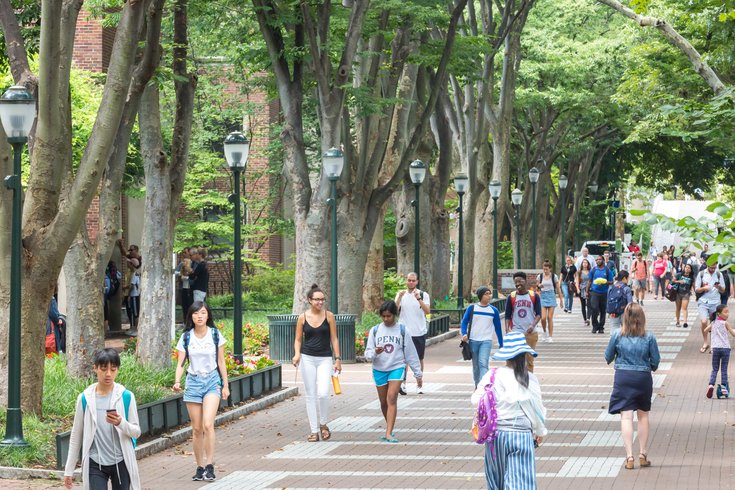
July 30, 2018
 Thom Carroll/PhillyVoice
Thom Carroll/PhillyVoice
Students on the campus of the University of Pennsylvania.
A new report has confirmed the suspicions of anyone who has paid for in-state tuition here in Pennsylvania: The state is one of the least affordable.
It ranked No. 48 in a recent study on college opportunity risk from the University of Pennsylvania's Graduate School of Education's Institute for Research on Higher Education that sought to identify college expenses, barriers to opportunity, affordability, and performance in each state compared to family income.
The report includes a full state-by-state comparison of policies that affect families' ability to pay for college, breaking down risk by education performance, equity, funding and productivity, and state economy and finances.
In terms of overall risk rating, Pennsylvania moderately ranked No. 23 in the nation, while neighbors New Jersey and New York ranked 26 and 38, respectively. And Pennsylvania fares well in categories like completion of college programs in a timely manner and higher education funding and productivity.
But here's a troubling fact: Only 2.9 percent of 25-to-64-year-olds are enrolled in educational programs beyond high school in Pennsylvania; that's dead last in the nation.
That's going to be problematic by 2025, according to the study, because the United States will need 60 percent of its workforce to have college degrees, certificates and other credentials.
And in 2016, about 46 percent of Pennsylvania residents had those credentials.
The state's biggest risk is its economy and its finances, which can be volatile. The study reports "rainy day" funds maintained to offset economic downturns balance as a share of annual expenditures was zero percent over the last two years.
According to a 2016 report on affordability, to pay for full-time tuition at Penn State, Pittsburgh or Temple, on average a family would have to spend 47 percent of its income. Twenty percent of families making $30,000 a year or less would be spending 105 percent of its annual income earnings.
That same study found at community colleges, often portrayed as the affordable solution for a student who can't afford university expenses, a student would have to work 29 hours every week to pay for full-time attendance. These institutions "can no longer be considered an affordable option," the report states.
Researchers have recommended lawmakers contribute more data to conduct a proper audit and then outline responsibilities of students and families, colleges and universities, and taxpayers.
You can read the entire report and learn more about each state's risk report here.